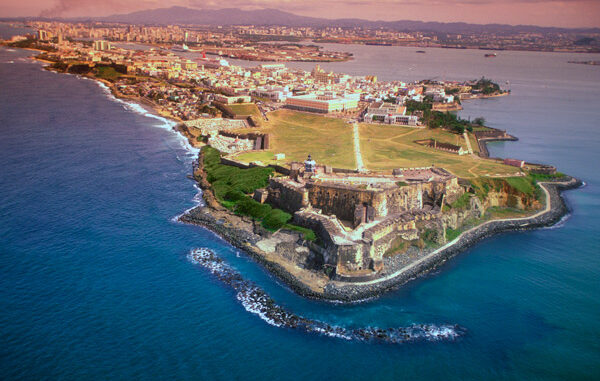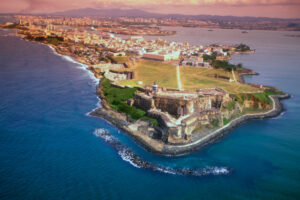

Medioimages/Photodisc/Getty Images,?p>
Aerial view of San Felipe del Morro Fort, San Juan, Puerto Rico
Would you like to explore a Caribbean island? Do you enjoy relaxing on a lovely palm-lined beach, scuba diving in warm turquoise waters, walking or biking along a malecón (seafront)? Do you like hiking through lush mountains or rain forests, visiting ancient forts and thriving colonial and modern cities, listening or dancing to lively music, or eating fresh, spicy Caribbean food? These three islands offer all of this and more! Of the many Caribbean Islands, these are the three where Spanish is the official language. The people and culture of these island countries represent a blend of Taino, African, and Spanish cultures. The islands are linked due to shared history, geography, climate, food, customs, and love of baseball and lively music. A true adventure awaits you!
Cuba lies about 100 miles off the coast of Florida. Havana, the capital and Cuba’s largest city, is a fascinating mixture of colonial and modern architecture and has a distinctly Spanish feel. Santiago de Cuba is Cuba’s second-largest city. On the other end of the island from Havana, Santiago offers a more Caribbean atmosphere, rich in history. Both cities are home to ancient forts, looking out onto beautiful bays. Cuba is a land of beautiful beaches with dazzling coral reefs, lush cultivated fields, lovely mountains and valleys, huge ancient limestone formations (mogotes), marshlands and lagoons, breathtaking islands or keys (cayos), delightful towns and villages, and large bustling cities.
The Dominican Republic is situated on the eastern two thirds of the Caribbean island Hispaniola, bordering Haiti on the west. The island is east of Cuba and west of Puerto Rico. The capital, Santo Domingo, is the island’s largest city. Founded in 1496 by European explorers, it was the New World’s first city, and quickly became the colonial capital of the Americas. Its colonial streets and architecture, impressive ruins, beautiful malecón, and lively atmosphere make this a must-see city. Don’t miss its annual merengue festival in July! If you prefer quieter settings, the Dominican Republic has many quaint colonial towns and villages, three mountain ranges for hiking, many rivers for fishing, and spectacular beaches.
Puerto Rico, a territory of the United States, offers surprising geographic diversity—central mountains and valleys, coastal lowlands, a northern limestone karst region with its caves and mogotes, deserts, dense rain forests, and amazing beaches. Its capital and largest city is San Juan, one of the busiest ports in the Caribbean. Old San Juan, or Viejo San Juan, is the charming colonial residential and commercial district of San Juan, with cobblestone streets, well-preserved Spanish architecture, and El Morro fortress guarding the bay. From the fortress, you can see the modern part of San Juan. Puerto Rico’s fourth-largest city, Ponce, possesses a unique cultural and architectural appeal, with its charming main square, ancient cathedral, and authentically restored colonial-era buildings. Puerto Rico, with all its beauty and variety, offers a delightful and rewarding experience for everyone.
Follow the link below to see a slideshow with images from Puerto Rico, Cuba, and the Dominican Republic.
Explore More:
1. Cuba’s popular music, a fusion of Spanish melodies and African rhythms, reflects the spirit of the country. Explore the history and significance of its son In the Dominican Republic, the most popular music is merengue, a fast-paced, passionate style of music. Puerto Rico enjoys its bomba (rhythmic drum music) and its salsa. If you are interested in music, investigate the different kinds of music popular in these countries, as well as popular singers and musicians. Can you name a famous singer or musician from these countries? If possible, listen to some music tracks and analyze and discuss the different types of music and singers. Which is your favorite?
2. Learn more about the capital cities of these countries. Describe their colonial sections and how they they are similar. What do their malecones have in common? What are the most important landmarks, and how do they reflect each city’s history? After researching these cities, which capital would you most like to visit, and why?
3. Choose a related topic that interests you, such as Caribbean food, art, literature, music, history, customs, holidays and festivals, flora and fauna, geography, economy, or Taino influence, and investigate it to prepare a report for your class, using visuals if possible.